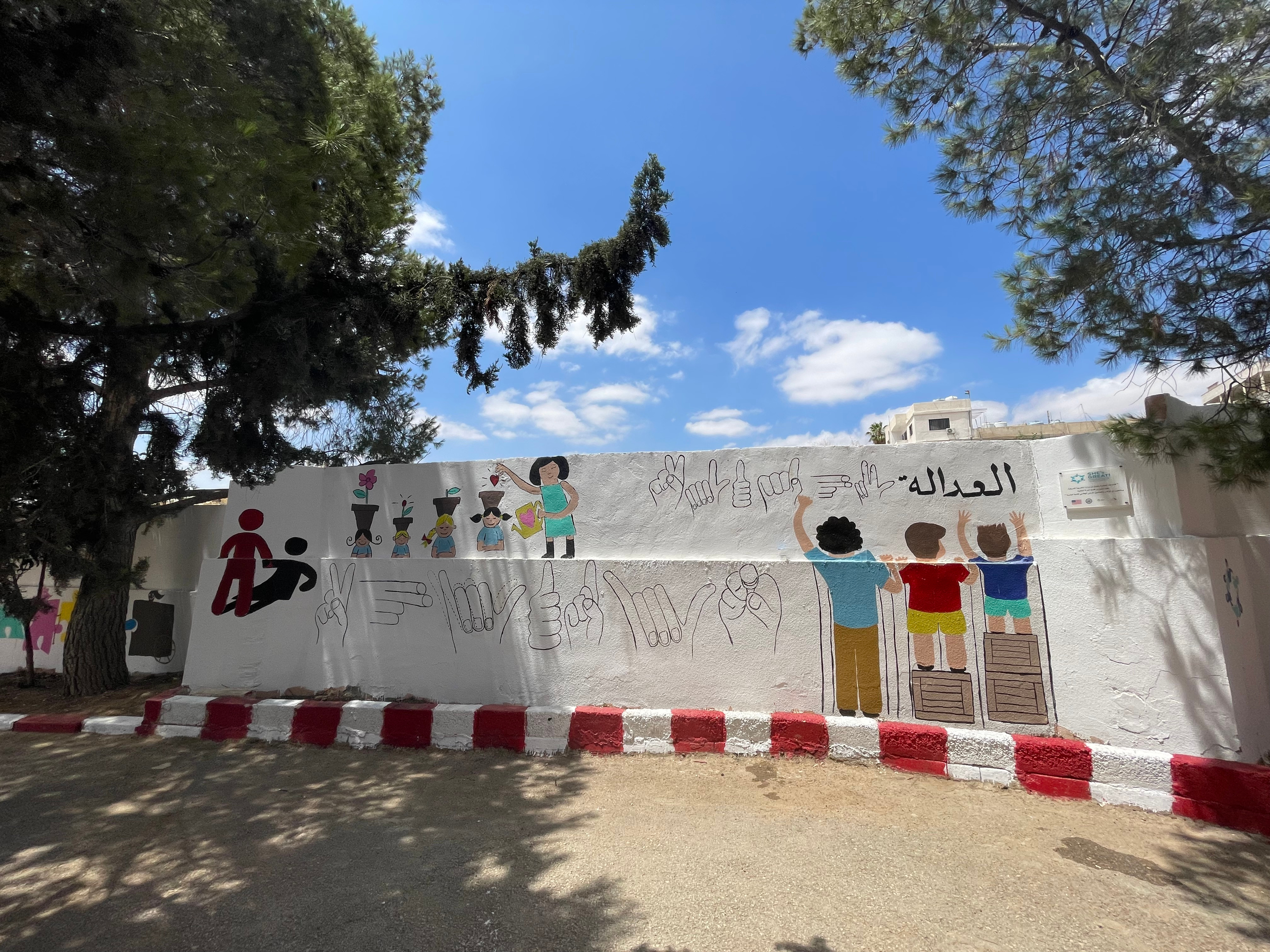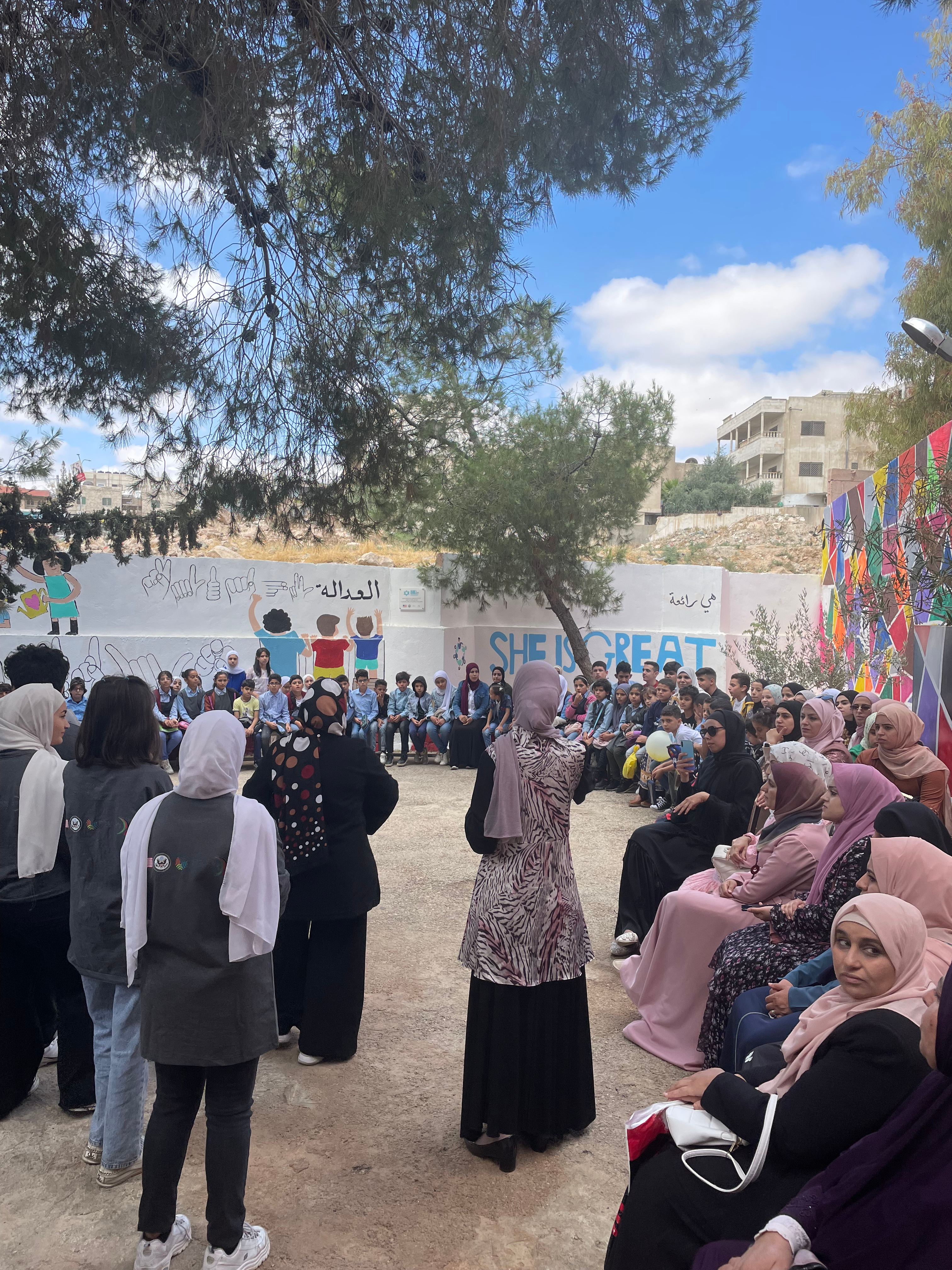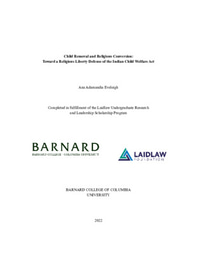Blonde Braids in Jordan - Reflection 2
One of the most memorable days of my Leadership-in-Action summer was when I had the opportunity to travel with the gender and female empowerment department to a school for deaf and hearing impaired youth run by my host organization. It was a special occasion, as the day marked the completion of an initiative of the SHE’s GREAT program (Support Her Empowerment - Girls’ Resilience, Enterprise, and Technology Initiative). Funded by IREX, the U.S. government, and the U.S. Department of State, SHE’s GREAT designed and executed the painting and landscaping necessary to create a “safe space” courtyard area at the school for students to enjoy time between classes and to host after school activities.
Our visit celebrated the safe space's official opening to students. Upon arrival, we were greeted by teachers, staff, and students already seated in the courtyard. The courtyard walls were brightly colored, covered in murals with positive messages about empowerment and aedala (justice). The space was beautiful, yet I had to laugh inwardly when I saw the donation plaque with the American flag and Department of State emblem. Here I was, thousands of miles from home, yet the U.S. was here, too. It was a puzzled, ironic kind of laugh greeting a complex reality in the global “development” landscape: the U.S. and other western nations invest significantly into gender empowerment initiatives in developing countries; the U.S. government invests significantly in Jordan generally. In this case, U.S. dollars had helped to create a beautiful thing for deaf students in Jordan to enjoy, an accomplishment well worth celebrating. Yet, foreign aid comes with foreign ideas, and are naturally tied to investors’ interests.
Reading the wall, I tried to assess its impact. It had sign language letters spelling “justice” and images of young girls growing, depicted as plants being watered by their teacher (see image below). I recognized the “equity” graphic of three boys standing on boxes meant to demonstrate the difference between equity and equality - equity is recognizing that different people need different amounts of support to achieve the same opportunities. These messages were generally uplifting, and the sign language writing was an impressive undertaking designed to maximize student understanding. However, I noticed that the drawings of people looked copied from an American textbook on empowerment, incongruent with typical Jordanian features. All people drawn appeared white, and two of four girls had blonde hair, one in braids - clearly not representing Jordanians. The teacher drawn wore a sleeveless dress and the boys in the “equity” graphic wore shorts - clothing most Jordanians would not wear publicly. Though all the school’s teachers and many older students at the school wore hijab, none of those depicted did. In my opinion, these culturally out-of-place graphics do not discredit the overall positive impact of the space, yet it is worth noticing how foreign investment can create progress in its own image. 
In critiquing this wall, it would be remiss not to acknowledge that the wall and I actually had a lot in common. I stood out from my coworkers that day as the only non hijabi and with red hair. Teachers at the school were surprised to find out that I worked at the empowerment department in Jordan, assuming that I was a visitor from the sponsoring U.S. organization called IREX. Like the U.S. State Department funding these murals, the Laidlaw Foundation supported me in working in the gender empowerment department for Leadership-In-Action. Both institutions constitute powerful, well-resourced western entities investing in a better global future, yet each according to their own standard / cultural perspective. In a strange way, the wall and I were a pair of American coworkers that day.
I had a great deal of fun at the school, helping to set up equipment for activities in the courtyard and chatting with high school volunteers we had brought from our organization headquarters. Most of the students won prizes for winning games, and everyone went back to class with a bagged lunch. From one of the teachers I learned how to say my name in Arabic sign language. I was glad to see firsthand the work of U.S. “development” initiatives abroad regarding gender. The wall was pleasant, yet it did not address the root causes of issues facing deaf children in Jordan or issues inhibiting the empowerment of young women in Jordan. At the same time, investing in school infrastructure does benefit the social-emotional wellbeing of students in ways not fully measurable.
I reveled in the students’ joy that day, while wondering how the initiative could have been done better; I wanted to know who had decided to paint blonde braids in Jordan.


Please sign in
If you are a registered user on Laidlaw Scholars Network, please sign in